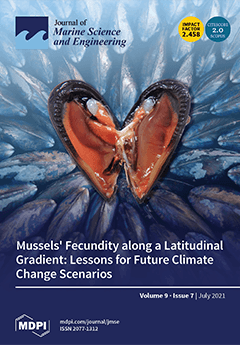The technical and economic assessments for emerging renewable energy technologies, specifically offshore wind energy, is critical for their improvement and deployment. These assessments serve as one of the main bases for the construction of offshore wind farms, which would be beneficial to the
[...] Read more.
The technical and economic assessments for emerging renewable energy technologies, specifically offshore wind energy, is critical for their improvement and deployment. These assessments serve as one of the main bases for the construction of offshore wind farms, which would be beneficial to the countries gearing toward a sustainable future such as the Philippines. This study presents the technical and economic viability of offshore wind farms in the Philippines. The analysis was divided into four phases, namely, application of exclusion criteria, technical analysis, economic assessment, and sensitivity analysis. Arc GIS 10.5 was used to spatially visualize the results of the study. Exclusion criteria were applied to narrow down the potential siting for offshore wind farms, namely, active submerged cables, local ferry routes, marine protected areas, reefs, oil and gas extraction areas, bathymetry, distance to grid, typhoons, and earthquakes. In the technical analysis, the turbines SWT-3.6-120 and 6.2 M126 Senvion were considered. The offshore wind speed data were extrapolated from 80 m to 90 m and 95 m using power law. The wind power density, wind power, and annual energy production were calculated from the extrapolated wind speed. Areas in the Philippines with a capacity factor greater than 30% and performance greater than 10% were considered technically viable. The economic assessment considered the historical data of constructed offshore wind farms from 2008 to 2018. Multiple linear regression was done to model the cost associated with the construction of offshore wind farms, namely, turbine, foundation, electrical, and operation and maintenance costs (i.e., investment cost). Finally, the levelized cost of electricity and break-even selling price were calculated to check the economic viability of the offshore wind farms. Sensitivity analysis was done to investigate how
LCOE and price of electricity are sensitive to the discount rate, capacity factor, investment cost, useful life, mean wind speed, and shape parameter. Upon application of exclusion criteria, several sites were determined to be viable with the North of Cagayan having the highest capacity factor. The calculated capacity factor ranges from ~42% to ~50% for SWT-3.6-120 and ~38.56% to ~48% for 6.2M126 turbines. The final regression model with investment cost as the dependent variable included the minimum sea depth and the plant capacity as the predictor variables. The regression model had an adjusted R2 of 90.43%. The regression model was validated with existing offshore wind farms with a mean absolute percentage error of 11.33%. The
LCOE calculated for a 25.0372 km
2 offshore area ranges from USD 157.66/MWh and USD 154.1/MWh. The breakeven electricity price for an offshore wind farm in the Philippines ranges from PHP 8.028/kWh to PHP 8.306/kWh.
Full article





